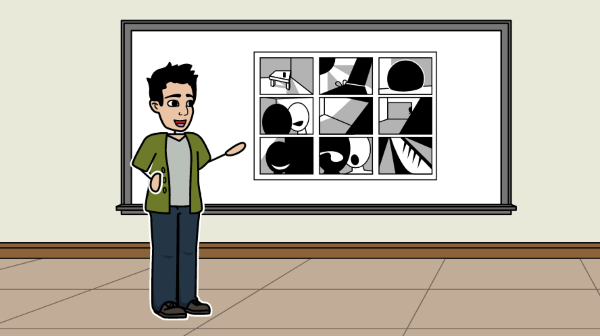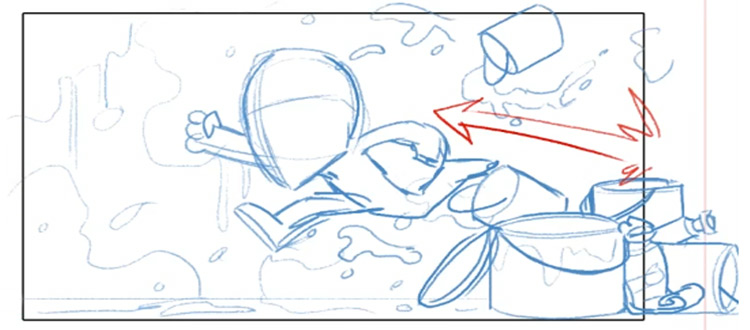
Whether your goal is to become an animator, work on live-action feature films, or plot storyboards for opening credits, music videos, or video marketing, creating a portfolio of work is a must. Get a peek at award-winning animator and filmmaker Chris Dooley’s storyboards for his live-action and animated work. You can teach yourself a lot about how the pros work and how they think.” “After you get through with a scene, play with it and watch how the pros did it - it’s an interesting contrast. “Grab a screenplay for something you haven’t seen and do a storyboard,” Holman suggests. Once you’ve gotten a handle on the basics, practice will help you hone your storyboarding skills as you try out new ideas. Your first storyboard will be a learning experience in what works and what doesn’t. How do you take the basic language of those three shots and put your spin on it?”

“Where the storytelling comes in is how you order those shots and when you zoom in or zoom out to push emotion in those moments. “You can bounce back and forth between them - those shots are not hard,” Mellon says. Honing your skill with three types of shots.īasic storyboarding can be distilled down to three types of shots: a single that focuses on one person, an over-the-shoulder shot that looks past one character to another, and a two-shot of both characters interacting.

Then start simply with only a few types of shots. Studying film theory will help you learn what shots work well in which sequences.
#SIMPLE STORYBOARD PROGRAM PROFESSIONAL#
That’s how a professional storyboard artist does it, but how do you learn what shots work well together? Research and study will help you learn what types work well in certain sequences. These are all creative choices that are made first by the storyboard artist. An establishing shot can be used to set the scene, an extreme close-up can add emotional focus, and the framing of different characters can help underscore their relationships. A director will begin creating their shot list from what is established in the storyboards. A storyboard artist will use different camera angles and types of shots to add action, drama, and emotion to a scene. You’re starting to envision what types of shots might be used in different moments to establish tone and character. “When it comes to the storyboarding, you’re not just doing the storytelling,” explains Archer art director Neal Holman. The storyboarding process: Putting camera shots together.

Animation storyboards, for instance, differ from live action as they often begin as a simple visual outline that gets fleshed out by a writer and artist collaborating on a more final product.) (Keep in mind, this process may be different based on the medium you want to work in. “Then we start Jenga with what’s possible - pulling out shots that are super hard to get.” Suggested special effects that go beyond the video production budget can be cut later, but in storyboards, opt for whatever makes the story most compelling. “Always do the dynamic or interesting thing in storyboards, first,” Mellon says. They must be a storyteller first and foremost, coming up with creative ways to break down scenes shot by shot in compelling ways while working in all the relevant details. “Storyboards are a guide that allows the director to explain what’s in their head to a hundred other people on set,” Mellon explains.īut an artist that draws storyboards isn’t simply executing a mandate.

They’re an important part of the pre-visualization process for everything from Disney cartoons to live-action motion pictures. A good storyboard brings the storyline to life.Īs visual representations of a script, storyboards begin the process of translating a story to the screen.


 0 kommentar(er)
0 kommentar(er)
